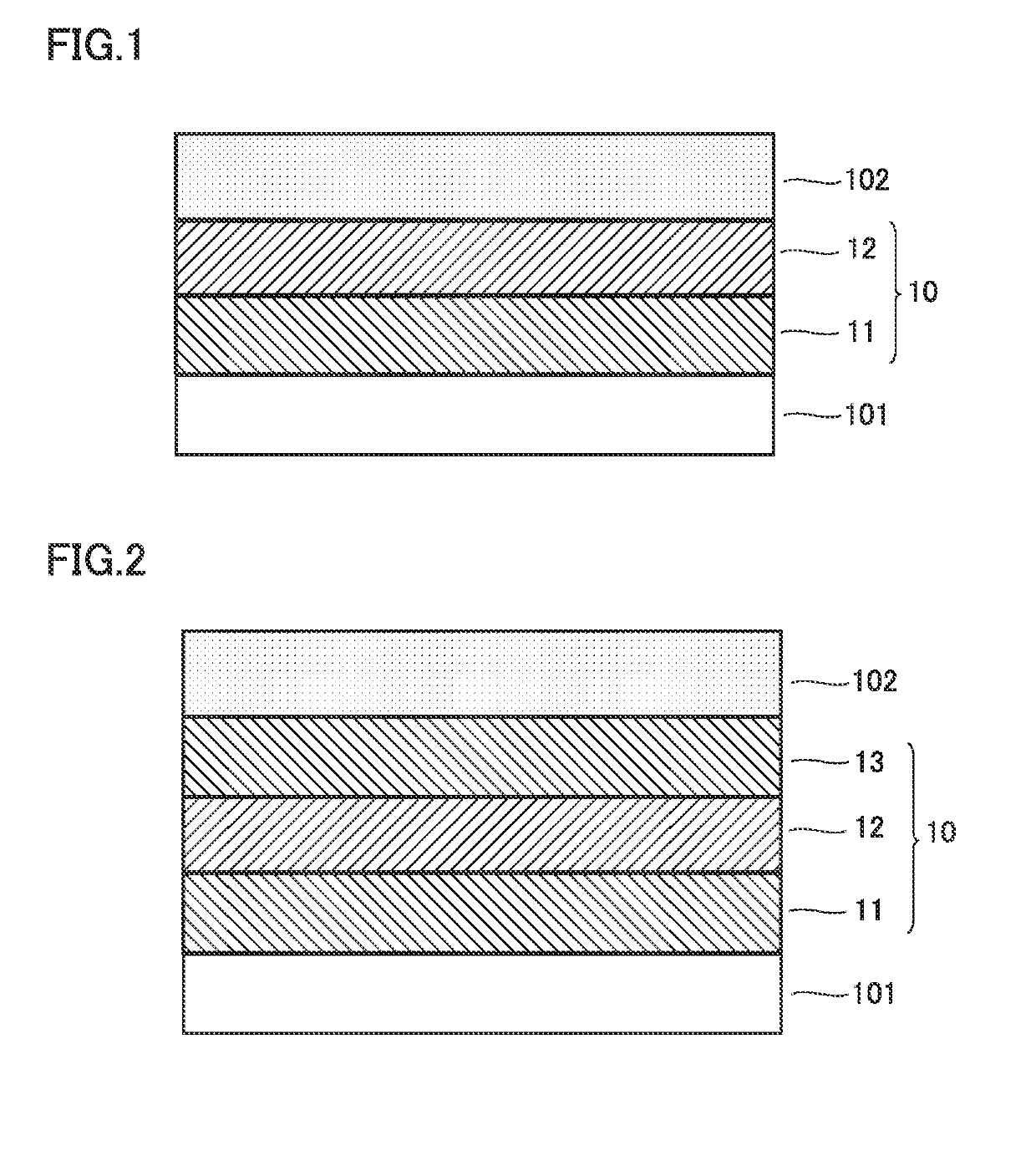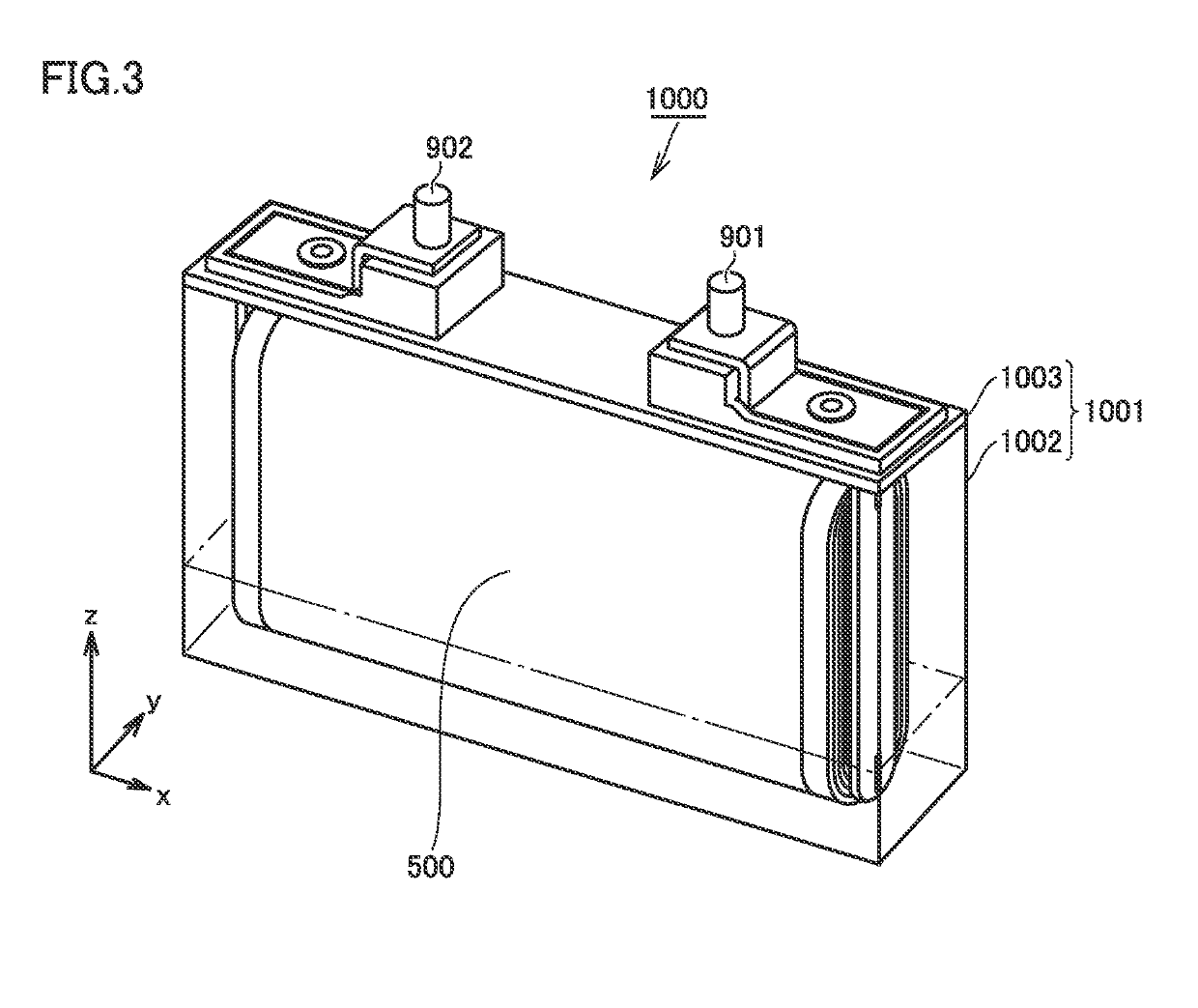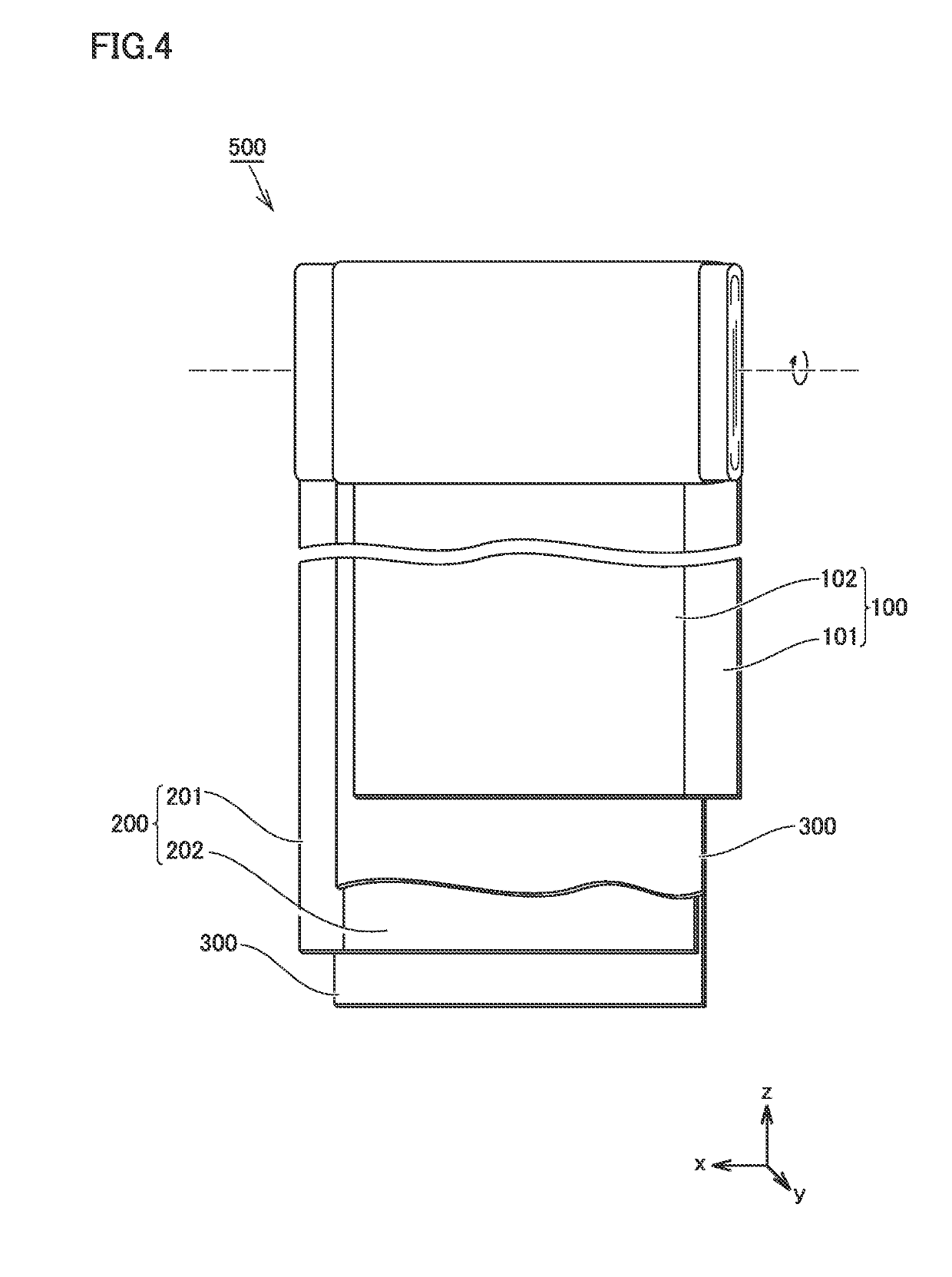Non-aqueous electrolyte secondary battery
a secondary battery and electrolyte technology, applied in the direction of cell components, final product manufacturing, sustainable manufacturing/processing, etc., can solve the problems of thermal runaway, insufficient suppression of battery increase temperature, void (a fracture) may be produced in such a protection layer, etc., to achieve the effect of suppressing the increase of battery temperatur
- Summary
- Abstract
- Description
- Claims
- Application Information
AI Technical Summary
Benefits of technology
Problems solved by technology
Method used
Image
Examples
example 1
[0105]1. Formation of Protection Layer
[0106]Materials below were prepared.
[0107]First conductive material: AB
[0108]Material for first resin: polyamic acid derived from pyromellitic acid dihydrate and 4,4′-diaminodiphenyl ether
[0109]Second conductive material: AB
[0110]Resin A: PVDF
[0111]Solvent: N-methyl-2-pyrrolidone (NMP)
[0112]Positive electrode current collector: Al foil (having a thickness of 15 μm)
[0113](Formation of First Protection Layer)
[0114]Slurry was prepared by mixing polyamic acid, AB as the first conductive material, and NMP in a planetary mixer. The slurry was prepared such that a solid content was set to “polyimide resin (first resin):AB (first conductive material)=99.5:0.5” at a mass ratio in formation of first protection layer 11. The slurry was applied to surfaces (both of front and rear surfaces) of positive electrode current collector 101 and dried. Thereafter, polyimide was synthesized from polyamic acid by performing heat treatment at 250° C. in nitrogen for si...
examples 2 to 18
[0148]Battery 1000 was manufactured as in Example 1 except for change in type of the first conductive material, content of the first conductive material, content of the first resin, thickness of first protection layer 11, type of the second conductive material, content of the second conductive material, content of resin A, and thickness of second protection layer 12 as shown in Table 1 below.
examples 19 to 41
[0153]Battery 1000 was manufactured as in Example 1 except that a prescribed amount of second resin was contained in second protection layer 12 in addition to change in type of the first conductive material, content of the first conductive material, content of the first resin, thickness of first protection layer 11, type of the second conductive material, content of the second conductive material, content of resin A, and thickness of second protection layer 12 as shown in Table 2 below. In Example 41, no second resin was contained in second protection layer 12. A resin identical to the first resin was employed as the second resin.
PUM
| Property | Measurement | Unit |
|---|---|---|
| mass % | aaaaa | aaaaa |
| mass % | aaaaa | aaaaa |
| thickness | aaaaa | aaaaa |
Abstract
Description
Claims
Application Information
 Login to View More
Login to View More - R&D
- Intellectual Property
- Life Sciences
- Materials
- Tech Scout
- Unparalleled Data Quality
- Higher Quality Content
- 60% Fewer Hallucinations
Browse by: Latest US Patents, China's latest patents, Technical Efficacy Thesaurus, Application Domain, Technology Topic, Popular Technical Reports.
© 2025 PatSnap. All rights reserved.Legal|Privacy policy|Modern Slavery Act Transparency Statement|Sitemap|About US| Contact US: help@patsnap.com



